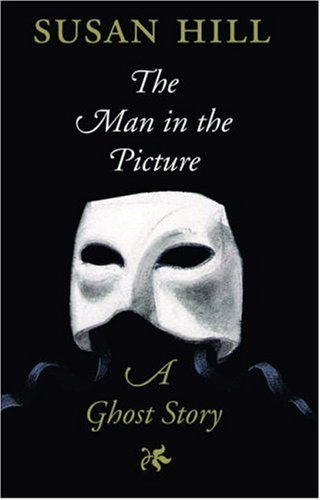
Book review – The Man in the Picture by Susan Hill
‘The Man in the Picture’ by Susan Hill
Review by Ren Zelen
Since Susan Hill’s most famous ghost story ‘The Woman in Black’ has enjoyed such success as a long-running theatrical production and now as a movie by the iconic Hammer Horror Films, it seems timely to examine some of her lesser known ghostly tales.
There are several others, ‘The Mist in the Mirror’ ‘The Small Hand’ and this, perhaps the least well known, ‘The Man in the Picture’. It is a short work, first published as a small hardback at only 145 pages.
The tale begins when Oliver visits his old tutor at Cambridge, Theo Parmitter, and is told a strange story. In the apartment of the professor, there is a late eighteenth century painting of Venice – a mysterious depiction of masked revellers at a night-time masked festival around the canals, lit by torchlight. One figure looks out of the scene at the viewer, frightened and beseeching, while the others continue in their revelry.
On this cold winter’s night, Oliver’s professor has decided to reveal an eerie secret. Though strangely repelled by it, he admits that the painting has an inexplicable hold over him. He has twice been offered whatever price he would name for it, but he could not bring himself to give it up. Now an old man, he feels that sharing its story with Oliver might relieve the burden he feels weighing upon him. The dark art of the Venetian scene, instead of imitating life, has the power to entrap it. To stare into the painting is to dangerously invite unseen malevolent forces and risk becoming a victim of its macabre attraction.
‘The Man in the Picture’ is a tragic tale of unruly passions, of loss and of the power of suggestion. It is pure Gothic. It has dark, cobbled College streets, donnish revelations before blazing fireplaces, freezing fog, death in decadent Venice and a ghostly figure exercising a malign influence through a Caravaggio-style picture. It is a suitably chilling tale within a tale, within a tale, and paintings have long been favourite repositories of malign power in horror stories.
Hill does an excellent job of describing the painting vividly and the story is compelling but rather predictable. It is lifted by the descriptive quality of Hill’s writing. She renders shadowy effects with dexterity, and although her characters are familiar ones (elderly don, young student, ancient dowager) they still remain engaging. She depicts the Venetian carnival scenes with lushness and verve, yet succeeds in making them unsettling and slightly grotesque.
However, the sense of time in the story can be confusing. The painting is apparently from the Victorian era and the sense of period in the writing puts one in mind of M. R. James or Conan Doyle, but it apparently takes place in modern times. Also, there are few explanations to be found in the story as to how the painting came to be created or how it works its curse on its victims. Presumably, there would have been more detail had the story been longer.
Perhaps it is simply a subtle metaphor concerning the power of art to entrap the viewer and to transfigure its objects, or the insidious power of suggestion that telling stories holds and the images this might engender in our unguarded subconscious.
Copyright R.H. Zelen – ©RenZelen 2012 All rights reserved.
